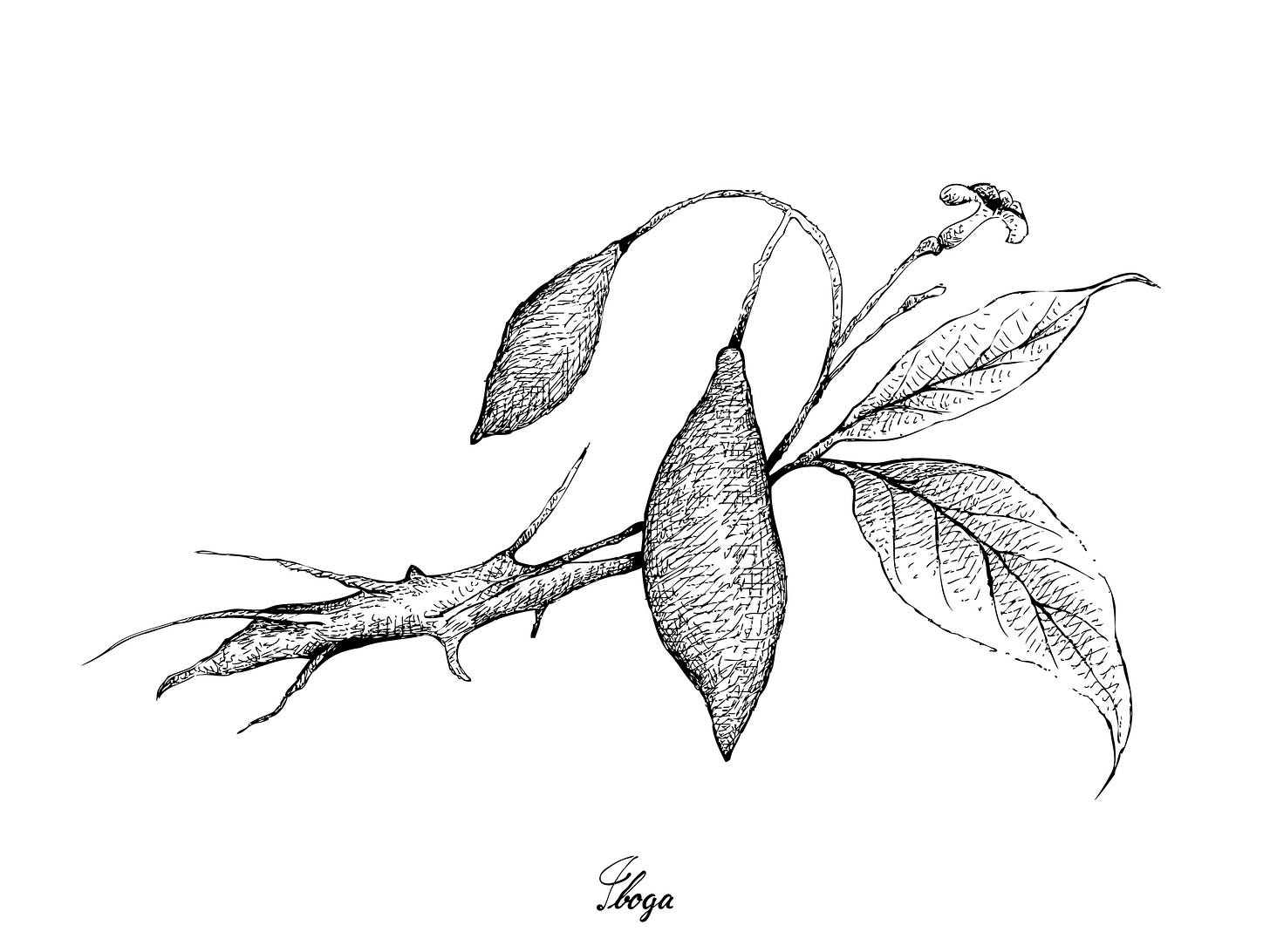This Week in Psychedelics: a non-hallucinogenic ibogaine, DEA increases MDMA and DMT quotas, improving methods in psychedelic science, and more
Happy Friday, and welcome back to The Microdose. Here's what happened this week in the world of psychedelics:
A non-hallucinogenic ibogaine. The National Institute on Drug Abuse (NIDA), a federal scientific research institute under the National Institutes of Health, just announced a new partnership with neuroscience biotech company Delix to study how an ibogaine analog can be used to treat substance abuse. Ibogaine, found in the West African shrub Tabernanthe iboga, can elicit potent psychedelic experiences — but can also induce unpleasant effects like vomiting as well as downright dangerous ones, like heart arrhythmia and cardiac arrest.
Delix’s co-founder David Olson is a professor and researcher at the University of California at Davis, where he created and patented a modified version of the ibogaine molecule he calls Delix-7. According to a paper Olson and his collaborators published last year in the scientific journal Nature, Delix-7 was formulated to remove the hallucinogenic experience and cardiac risks of ibogaine, and showed potential in reducing alcohol- and heroin-seeking behavior in rodents. In this new partnership, NIDA will test Delix-7 to determine its safety for therapies; the agency declined Forbes’s request to comment on the status of preclinical testing. “We're particularly excited about this as a possibility,” NIDA’s deputy director told Forbes. “But it remains very speculative and a possibility, not a reality.”
Eliminating barriers to psychedelic research. In the US, psilocybin, mescaline, MDMA, and DMT are classified as Schedule I drugs — “drugs with no currently accepted medical use and high potential for abuse,” according to the DEA. This classification has been a barrier for researchers studying these drugs’ therapeutic potentials; Schedule I substances require special approvals from regulators that take time to obtain. But that could be changing: Marijuana Moment reports that at a House Energy and Commerce subcommittee hearing last week, the DEA and NIDA expressed support for an Office of National Drug Control Policy (ONDCP) proposal that would ease the barriers to doing research with Schedule I drugs.
To do that, the DEA will likely loosen research requirements for Schedule I drugs to be more similar to that of Schedule II drugs. Currently, each researcher working on a study using Schedule I drugs must register with the DEA, but proposed changes would allow a research institute to submit just one registration that covers multiple researchers. Another change, according to Marijuana Moment: rather than waiting for sign-offs from Department of Justice officials, some researchers may be able to begin their work after submitting the proper paperwork. While these changes were originally proposed in September, the talk at last week’s meeting suggests there may be agreement among the agencies involved, and that changes could move forward quickly.
There has never been a more exciting – or bewildering – time in the world of psychedelics. Don’t miss a beat.
DEA ups quotas yet again. Last month, we reported on the DEA’s quotas for the production of controlled substances to be used by researchers and pharmaceutical companies. Compared to its 2021 quotas, the agency upped its 2022 quotas for some Schedule I drugs such as mescaline and LSD, but maintained the same quota for MDMA and reduced quotas for psilocybin, psilocin, and DMT. However, in a new notice published December 2, the DEA has now increased quotas for MDMA, psilocybin, psilocin, and DMT — as well as Schedule II drugs lisdexamfetamine and phenylacetone. These quotas are determined by the DEA based on demand from clinical trials, so these upward revisions can be read as a reflection of increased research.
The DEA report also included synopses of feedback they received, which included “a comment from a biotech company suggesting that DEA discuss involving representatives from indigenous communities” in determining quotas for controlled substances derived from plants traditionally used by indigenous groups. Another comment from the Native American Church of North America raised concerns that the DEA’s mescaline quota could affect the availability of peyote, a cactus that contains mescaline — the DEA responded that all mescaline produced by the agency’s approved partners would be synthetic.
Improving methods in psychedelic science. As research fields grow and expand, there are often accompanying growing pains. Perhaps you’ve read about psychology’s replication crisis, or research misconduct in the scramble to publish COVID-19 research. With psychedelic science booming, researchers affiliated with the University of California at San Francisco, Stanford, and the University of Florida have collaborated on a new paper called “Great Expectations: Recommendations for improving the methodological rigor of psychedelic clinical trials.” The paper itself has not been peer-reviewed or published, but was posted to PsyArXiv, a repository for drafts of papers about the psychological sciences.
The authors describe methodological challenges when running clinical trials involving psychedelic drugs — the same issues, the authors write, “that have simmered in both psychotherapy and pharmacology research for decades,” but also new issues specific to psychedelics, like “hype” and, of course, managing some hallucinogenic effects. Typically, in clinical trials, some participants are treated with a drug, and for comparison, other participants are treated with a placebo — but it can be hard to do that successfully with psychedelics given the potent, obvious effects of drugs like MDMA, psilocybin, or LSD. The paper details strategies researchers are trying, and their suggestions for improving future research, like recruiting participants who haven’t used psychedelics (and therefore won’t be able to compare their experience during the study to previous psychedelic experiences), and managing participants’ expectations.
Big investments. Whereas psychedelic research may have initially been funded by philanthropists and nonprofits, investors and companies are increasingly interested in putting their money towards new studies. This week saw several such announcements: Multidisciplinary Association for Psychedelic Studies (MAPS) announced a partnership with venture capital firm Vine Ventures to create a “special purpose vehicle” — essentially, an organization within their organization — to generate $70 million for new research studying how MDMA can be used to treat PTSD. Meanwhile, mental health company Nue Life Health is donating $50,000 to MAPS to study how psychedelics can treat mental health issues. And the Noetic Fund, which invests in psychedelic companies, has financed $7.2 million for the Alexander Shulgin Research Institute, a drug company developing psychedelic compounds for clinical use.
How do psychedelics affect people who menstruate, or those going through pregnancy or menopause? DoubleBlind Magazine is hosting an event on December 19 with neuropharmacologist Alli Feduccia about what we know — and don’t know — about psychedelics, hormones, and menstrual cycles.
Journalists: have a great psychedelics story idea? Apply for the Ferriss-UC Berkeley Psychedelic Journalism Fellowship. Fifteen $10,000 reporting grants will be issued in the next year, and the next deadline for applications is January 31.
You’re all caught up! Have a great weekend, and stay tuned on Monday for 5 Questions, our weekly Q&A with a leader in the psychedelics space.
If you know anyone who might like the latest on psychedelics in their inbox, feel free to forward this to them, or click below.
Got tips? Email us at themicrodose@berkeley.edu.








